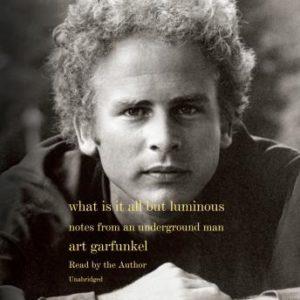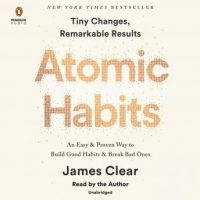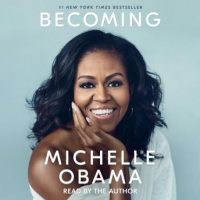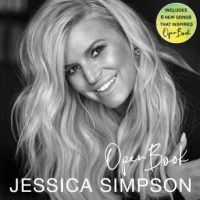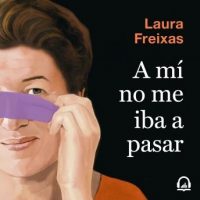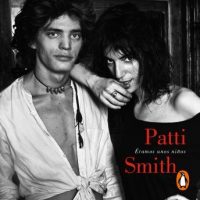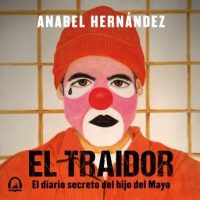What Is It All but Luminous: Notes from an Underground Man Audiobook (Free)
- Art Garfunkel
- 5 h 9 min
- Random House (Audio)
- 2017-09-26
Summary:
‘Poetic musings on a life well-lived-one that’s still moving forward, always creating, always luminous. This is not your regular autobiography. Garfunkel’s history is told in flowing prose, bounding from show past, far from a linear rags-to-riches tale.’
-Bookreporter
‘It’s hard to assume any single word that could accurately describe this reserve . an entertaining volume that’s more pleasurable to read when compared to a regular memoir may have been.’
-The Wall Road Journal
about What COULD IT BE Basically Luminous: Notes from an Underground Guy
‘A charming reserve of prose and poetry published within a digitalized edition of his handwriting . . . witty, candid, and wildly imaginative . . . A highly intelligent man trying to make feeling of his amazing life.’
-Associated Press
From your golden-haired, curly-headed half of Simon & Garfunkel, a memoir (of sorts)-moving, lyrical impressions, interspersed within a narrative, punctuated by poetry, musings, lists of resonant books loved and admired, uncovering a life and the making of the musician, that show us, aswell, the evolution of a guy, a portrait of a life-long friendship and of a collaboration that became the most successful singing duo in the roiling age that embraced, and was defined by, their pathfinding folk-rock music.
In What Is It Basically Luminous, Art Garfunkel creates about growing up in the 1940s and ‘50s (child of a journeying salesman, hearing as his father played Enrico Caruso records), a middle-class Jewish youngster, living in a redbrick semi-attached house on Jewel Avenue in Kew Gardens, Queens.
He writes of conference Paul Simon, a child who made Art laugh (they met at their graduation play, Alice in Wonderland; Paul was the White Rabbit; Artwork, the Cheshire Cat). Of their becoming twelve at the birth of rock’n’roll (“it was tempo and blues. It was black. I had been captured therefore was Paul”), of a demonstration of their song, Hey Schoolgirl for seven dollars and the actual record (with Paul’s dad on bass) likely to #40 on the charts.
He writes about their getting Simon & Garfunkel, ruling the pop graphs from the age of sixteen, about not being a organic performer but even more a thinker, an underground man.
He writes from the hit tunes; touring; about as an actor working with directors Mike Nichols (“the best of these all”), about choosing music more than a PhD in mathematics.
And he writes about his long-unfolding split with Paul, and exactly how and just why it advanced, and after; understanding how to perform on his own . . . and about being truly a hubby, a father and much more.

